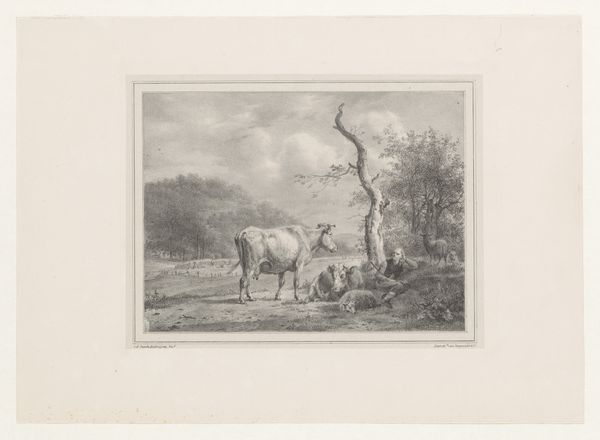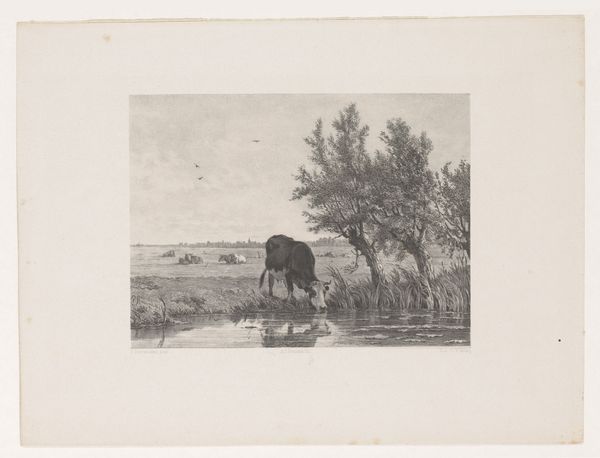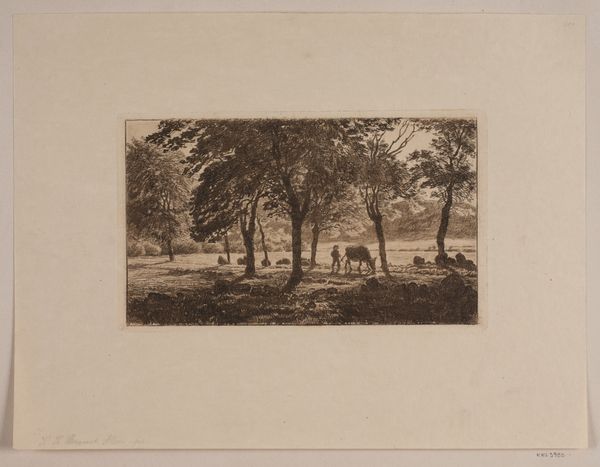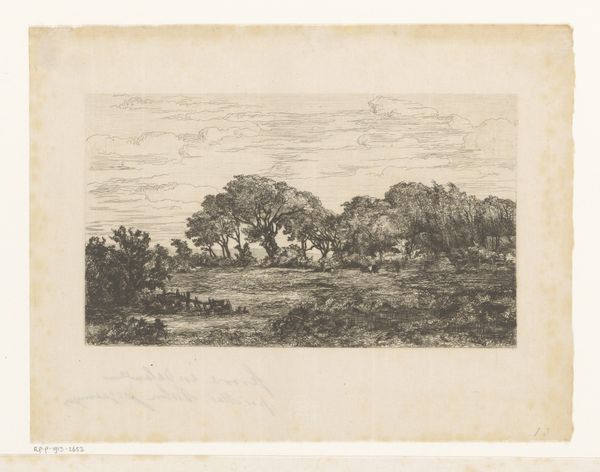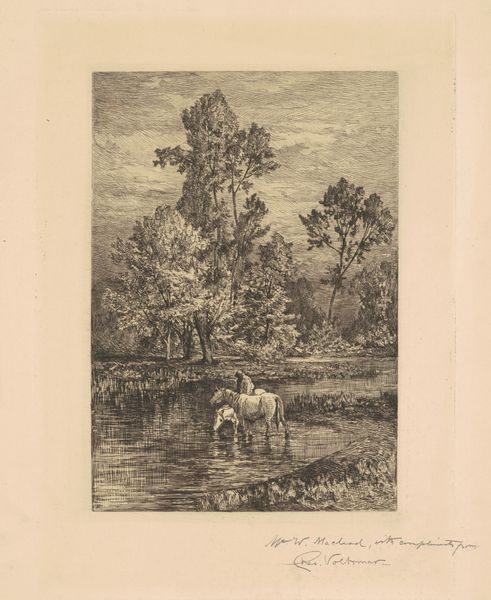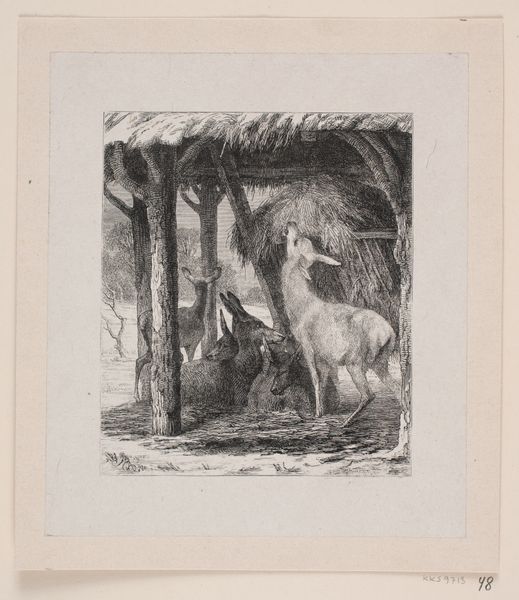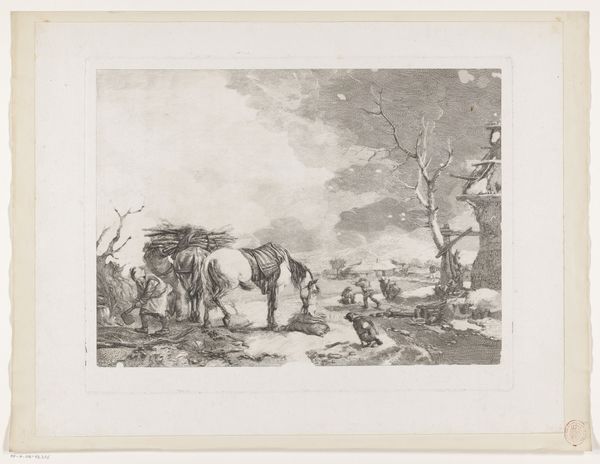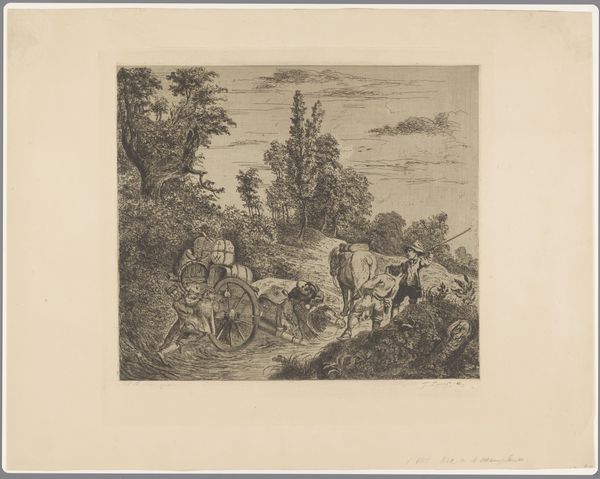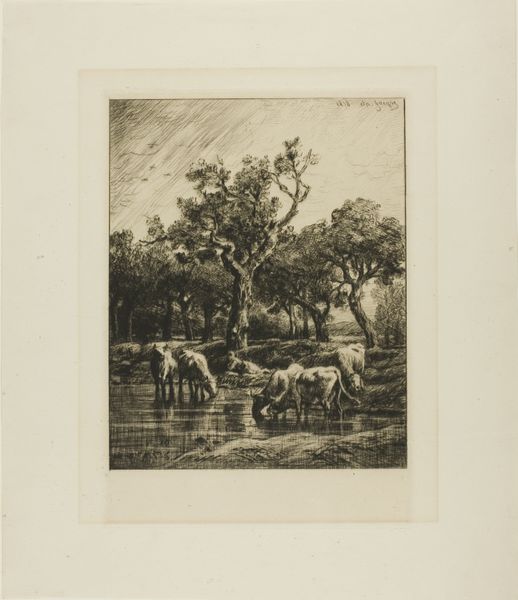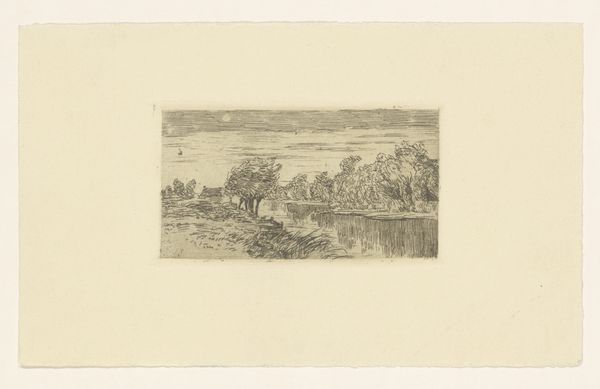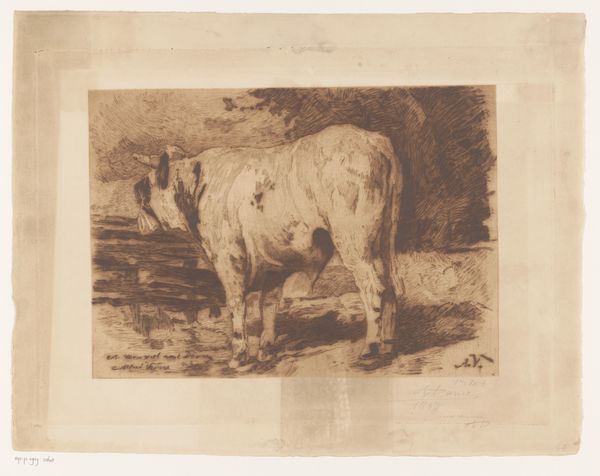
drawing, pencil
#
pencil drawn
#
drawing
#
landscape
#
pencil drawing
#
pencil
#
horse
#
realism
Dimensions: height 349 mm, width 408 mm
Copyright: Rijks Museum: Open Domain
Editor: This is "Landscape with a Grazing Horse," created in 1886 by Alexis Forel, rendered in pencil. It feels like a simple, pastoral scene, almost dreamlike because of the monochromatic tones. What historical factors might have influenced the creation of such a seemingly tranquil piece? Curator: That’s a keen observation. On the surface, it’s an idyllic landscape. But consider the late 19th century; industrialization was rapidly transforming Europe. Rural life was romanticized even as it was disappearing. Do you see any clues in the image that might speak to social tensions? Editor: The lone horse suggests a certain isolation...maybe the fading of rural life? Curator: Precisely. Forel was working in a time when artists were increasingly interested in portraying "real" life, yet realism often reflected anxieties about social change. The very act of depicting a tranquil landscape was, in some ways, a commentary on what was being lost. Editor: So the pencil drawing isn't just a depiction, it's an argument? Curator: Exactly! Consider, too, the role of art institutions: landscape paintings were increasingly popular in galleries, offering viewers an escape, a carefully curated vision of nature in an increasingly urban world. What do you think Forel is trying to tell us about this changing society? Editor: That art reflects more than the aesthetic beauty that it possesses, that it tells us the state of a culture in its historical context. That landscapes can be imbued with anxieties about societal transformation and nostalgia for simpler times. Curator: Indeed, and in this case, Forel gives us much to reflect on how we interpret nature through the lens of progress and change. Editor: I see this drawing with entirely new eyes now. Thank you for this different perspective.
Comments
No comments
Be the first to comment and join the conversation on the ultimate creative platform.
